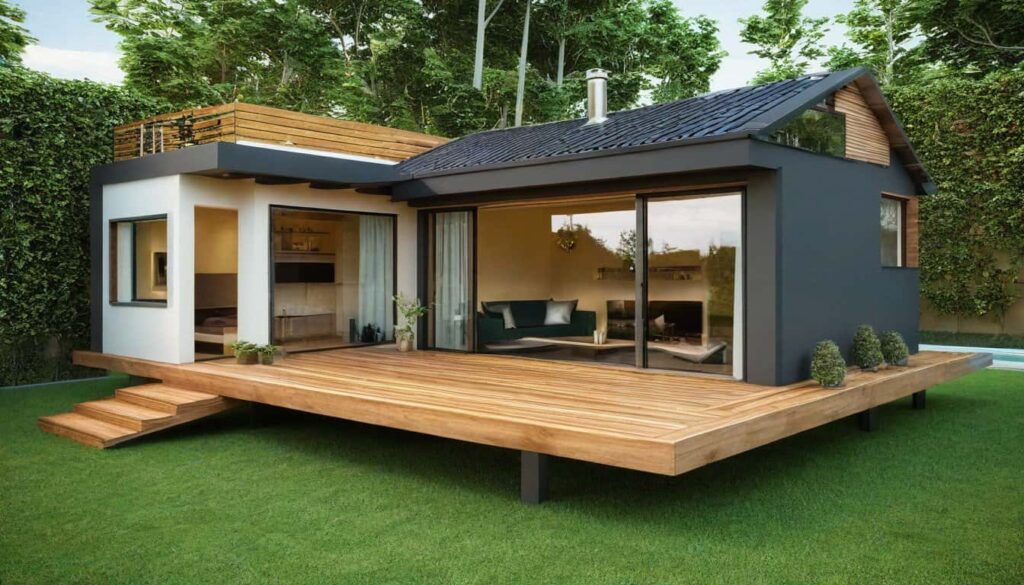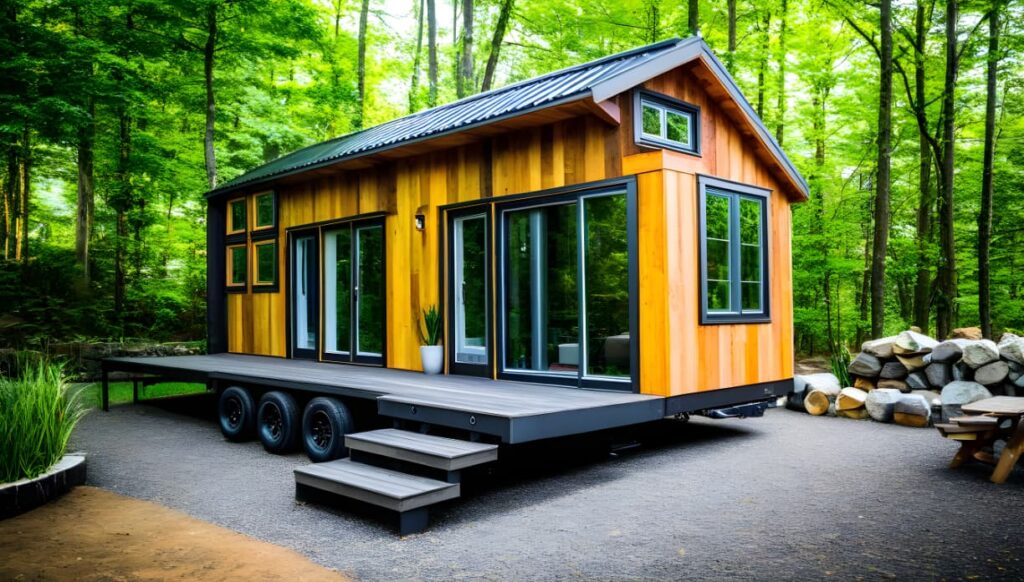The small home movement, also known as the tiny house movement, has gained significant traction in recent years. People are increasingly drawn to the idea of living in compact, efficient spaces that prioritize simplicity, sustainability, and financial freedom. This movement has been fueled by a variety of factors, including environmental concerns, financial constraints, and a desire for a more minimalistic lifestyle.

Origins of the Small Home Movement
The small home movement can be traced back to the late 1990s when Jay Shafer built his first tiny house as a design challenge and a form of architectural rebellion. Shafer’s tiny house, measuring just 12 feet tall and 8 feet wide, defied the minimum size requirements dictated by building codes. His goal was to prove that living in a small house could be safe, efficient, and reasonable.
While Shafer’s tiny house initially appealed to those with a taste for civil disobedience, it soon caught the attention of environmental enthusiasts and individuals seeking a low-footprint, quality-over-quantity lifestyle. The idea of waking up in a loft bed, brewing coffee in a compact yet exquisitely designed kitchen, and sipping it on a tiny porch as sunlight filtered through pine needles resonated with many.
The Growth of the Small Home Movement
Following the success of his tiny house experiment, Shafer founded Tumbleweed Tiny Houses in 2000, a design and construction company that experienced exponential growth over the years. The tiny house movement gained momentum with the emergence of tiny house blogs, books, reality series, and documentaries, all extolling the virtues of living better by living with less.
However, despite the buzz surrounding the movement, tiny houses never fully entered the mainstream realm of homeownership. Instead, they found popularity among tourists seeking a temporary escape to a smaller-scale, climate-friendly lifestyle. Today, you’re more likely to come across a tiny house as an Airbnb listing rather than a traditional real estate property.
The Appeal of Small Homes
The appeal of small homes lies in their efficiency and sustainability. The size of a house directly correlates with the resources required to power, cool, and heat it. By living in a small home, individuals can significantly reduce their carbon footprint and minimize their consumption of energy and water. Additionally, limited storage space in tiny houses discourages wasteful consumption of material possessions, addressing a significant environmental concern.
Financial considerations also play a role in the appeal of small homes. The initial cost of purchasing or building a tiny house may be lower than that of a traditional-sized home. This aspect became particularly attractive to a generation of young people grappling with financial constraints and disillusionment with the over-mortgaged homes of their parents.
The Tiny House Market

The tiny house market has seen significant growth in recent years. According to a report by Technavio, the market size has the potential to grow by USD 3.33 billion during 2021-2025, with a projected compound annual growth rate (CAGR) of 4.31%. The market is divided into two main categories: mobile tiny homes and stationary tiny homes. North America, Europe, Asia-Pacific (APAC), South America, and the Middle East and Africa (MEA) are identified as key geographical regions for market growth.
Challenges and Opportunities
Despite the growing popularity of small homes, the movement has faced challenges in terms of zoning and regulations. Many local governments have minimum square footage requirements, making tiny houses ineligible for full-time living. Additionally, tiny houses are often classified as recreational vehicles (RVs), subjecting them to restrictions on year-round occupancy. These zoning issues have limited the availability of suitable parking and utility connections for tiny houses.
However, the tiny house movement has not given up. Advocates are working to change zoning laws and promote the benefits of tiny houses as a solution to the affordable housing crisis. The Accessory Dwelling Unit (ADU) movement, for example, encourages homeowners to construct tiny houses in their backyards, increasing the supply of affordable housing in dense urban areas.
The Environmental Impact
One of the key advantages of small homes is their positive environmental impact. By occupying less space and utilizing fewer resources, tiny houses contribute to a more sustainable way of living. They require less energy for heating, cooling, and lighting, resulting in reduced carbon emissions. Additionally, the use of renewable energy sources, such as solar power, can further enhance the sustainability of small homes.
Furthermore, small homes often prioritize eco-friendly design elements. Natural lighting is maximized through large windows and skylights, reducing the need for artificial lighting during the day. Recycled materials, such as reclaimed wood and salvaged fixtures, are commonly used in the construction of tiny houses. Additionally, composting toilets and rainwater harvesting systems promote water conservation.
A Turning Point for the Small Home Movement
The small home movement experienced a surge in interest and sales during the COVID-19 pandemic. As people sought alternative housing options and embraced a simpler lifestyle, tiny houses emerged as a viable solution. However, experts believe that the movement is at a turning point and must adapt to remain relevant.
To ensure the continued growth of the small home movement, advocates are working to market it as an affordable housing option for singles and couples without children. Distancing themselves from the association with recreational vehicles and camper vans is also crucial. The ultimate goal is to convince more states and municipalities to legalize tiny houses and integrate them into the mainstream housing market.
The Future of Small Homes
While the initial hype around tiny houses may have faded, the movement continues to thrive in various forms. Small homes are being considered as a potential solution for homelessness in cities like Seattle and Oakland. The concept of building tiny houses in backyards as ADUs has gained traction in high-density areas. Municipal building codes are now incorporating provisions for tiny houses, legitimizing them as a viable housing option.
The small home movement has undoubtedly made an impact on the housing industry and society at large. It has challenged traditional notions of homeownership, promoting a more sustainable and minimalist lifestyle. As the demand for affordable, eco-friendly housing intensifies, small homes will likely continue to evolve and find their place in the housing market of the future.
Conclusion
The small home movement has come a long way since its inception in the late 1990s. What started as an architectural rebellion has evolved into a thriving movement that promotes sustainable living, financial freedom, and a simpler way of life. While challenges remain in terms of zoning and regulation, the movement has made significant strides in gaining recognition and legitimacy.
As the world grapples with environmental issues and the need for affordable housing, small homes offer a unique solution. Their compact size and efficient design minimize resource consumption and carbon emissions. Additionally, the affordability and flexibility of tiny houses make them an attractive option for individuals seeking financial freedom and a break from the demands of traditional homeownership.
The small home movement is not just a passing trend but a reflection of changing values and priorities. It has the potential to shape the future of housing, offering a sustainable and affordable alternative to the conventional housing market. As the movement continues to evolve and overcome challenges, small homes will play a vital role in creating a more sustainable and inclusive housing landscape.
